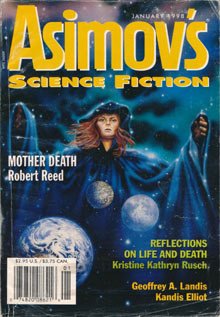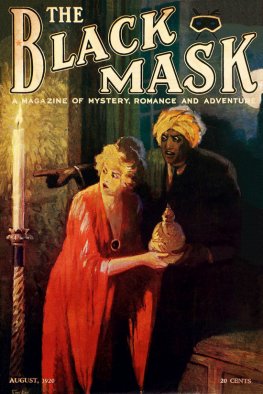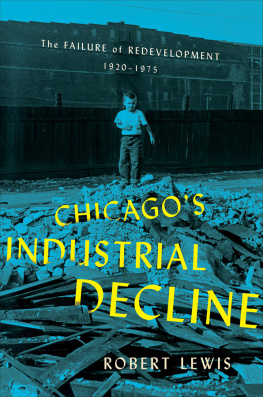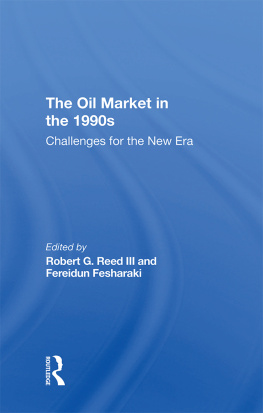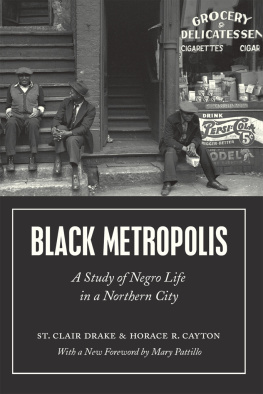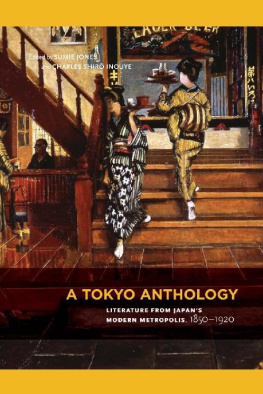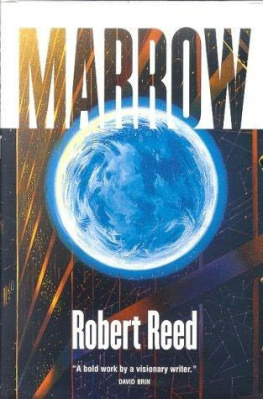2011 by Christopher Robert Reed
All rights reserved
Manufactured in the United States of America
C 5 4 3 2 1

This book is printed on acid-free paper.
Library of Congress Cataloging-in-Publication Data Reed, Christopher Robert.
The Rise of Chicagos Black Metropolis, 19201929 / Christopher Robert Reed.
p. cm. (The new Black studies series)
Includes bibliographical references and index.
ISBN-13: 978-0-252-03623-1 (hardcover : acid-free paper)
ISBN-10: 0-252-03623-9 (hardcover : acid-free paper)
1. African AmericansIllinoisChicagoHistory20th century.
2. Chicago (Ill.)History20th century.
I. Title.
F548.9.N4R445 2011
305.896'073077311dc22 2010046046
ACKNOWLEDGMENTS
At the end of the twentieth century, I began the daunting task of constructing a one-hundred year history of African America settlement that began during the nineteenth century, along with an exploration of this populations contributions to the growth and development of Chicago. Along this tortuous path, I was aided by many persons and institutions through which personal contact the sharing of information and interpretation of thought and actions became the norm. The family historian of the Hall (Rev. Abram and Joanna) family, Mrs. Jeanne Boger Jones of Grand Rapids, Michigan, led the way into understanding how the trove represented in family histories provided insight into the interior history of black Chicago. In addition, Mrs. Elizabeth Mitcham Butler of the Mitcham family and Mrs. Libby Davis Topps of the Davis family, both of Chicago, rendered valuable assistance in discerning those essential elements in African American life needed to understand what W. E. B. Du Bois wrote of in The Souls of Black Folk as the meanings of their lives. Moreover, Doris Saunders of Jackson, Mississippi and Chicago shared her insight on African American polite society generally as well as about specific individuals. Jeff Ball of Chicago, a relative of the late Third Ward alderman Robert R. Jackson, proved a persistent witness to his relatives accomplishments and contributions. The Rev. Leon Scott of historic Berean Baptist Church joined with the Revs. James and Corliss Moody of Quinn Chapel AME Church in showing the way toward appreciating the significance of religion in the lives of Chicagos black population.
Scholarly advice flowed as readers of this manuscript in its roughest form braved the authors sometimes complex, often confusing, concepts and interpretations and rendered their valued criticisms and suggestions. Dean Lynn Y. Weiner of Roosevelt University and Pia Hunter of the University of Illinois at Chicago volunteered first and stayed the course to their credit and benefit. They were joined in this effort by Marionette Catherine Phelps who has proved a faithful and insightful reviewer. Moreover, Professors Clovis Semmes, Robert T. Starks, and Robert Howard, all members of the Black Chicago History Forum, demonstrated that organizations valuable role as they provided insight and clarifications on key historical events in Chicago history. The late Dempsey Travis, one of the key contributors to modern black Chicago history, banker Billy Williams and .
Acknowledgment must be accorded the staffs at the Harold Washington Library Center of the Chicago Public Library for their professional approach to scholarly research over many years. Their ranks included Theresa Yoder and Majag Walsh in Special Collections, Warren Watson and George Tibbits in the Reference Division, and Ronisha Epps and Claudia Armstrong in Microfilms. I am compelled to extend special recognition to Curator Robert Miller, Archivist Michael Flug and Beverly Cook at the Vivian G. Harsh Research Center of Afro-American History and Literature at the Chicago Public Librarys Carter G. Woodson Regional Library. This dynamic trio always stood ready to assist in mining the Harsh Collections many treasures, especially within the famed Illinois Writers Project. At the offices the Chicago Landmarks Commission, where the author serves as a member, Brian Goeken, Lisa Willis, Susan E. Perry, Terry Tatum, Eleanor Gorski and Beth Johnson provided needed assistance through their informed knowledge of Chicagos architecture and design. Chicagos extensive repositories of knowledgethe Newberry Library, the University of Chicago and Northwestern Universityalways opened their doors with staff support that was cordial and informed. Librarian Pia Hunter, assisted by microfilm technicians April Pittman and Delores Thomas, at the main library at the University of Illinois at Chicago gave generously of skills as this project proceeded. Thanks go out to Leroy Kennedy and Christopher Stewart at the Illinois Institute of Technology for their participation in searching out and providing visual evidence of black Chicagos rise.
Lastly, at my alma mater, Roosevelt University, I received continuous technical assistance from Helen Taylor, Dayne Agnew, Cheryl Williams-Sledge, Jaime Reyes, Vincent Perkins, Bernard Turner, Heidi Foster, Mary Foster, Chris Mich, Lynnett Davis and Michael Ensdorf as well as printing assistance from Wayne Magnus and Richard Woodfolk.
The editorial and marketing staffs at the University of Illinois Press encouraged the production of this book, so loud huzzahs go out to acquisitions editor Joan Catapano along with Jennifer Clark and Ann Beardsley. The entire Reed family that includes my wife, Marva, children, and grandchildren contributed in various ways as well to what exists in the end as a personal salute to courageous and productive Chicagoans of the 1920s.
Introduction
What a change ten years has wrought in the affairs of our people! The changes wrought seem almost revolutionary and not a gradual and continual change in the regular or evolutionary course of affairs.
Joseph [D.] Bibb, 1929
For over a half century, perhaps the best scholarly work exploring African American life in large, industrialized, northern cities with expanding populations has been St. Clair Drake and Horace R. Caytons Black Metropolis: A Study of Negro Life in a Northern City (1945). This tomes value to scholarship over the years extended beyond its use as a sociological tool to become a reference and model in related fields. Moreover, its appearance as a major reference in historical studies has been just as widespread, and many of its assumptions have become pervasive in historical interpretation. The study, in particular, examined the important role in understanding the migrant as it clarified the positive (as well as the negative) role any sojourner could have on northern city life as the forces of urbanism reciprocally molded his or her new experiences and worldview.
As a document originally meant to examine the underlying causes of juvenile delinquency, it delved extensively into areas that required greater attention than that given by the myriad researchers who scoured Chicagos South Side during the decades of the 1930s and 1940s. This valued exploration, sometimes an excursion taken by strangers into African American life, took place amid the ruins of the Great Depression and advent of global conflagration. As a consequence, it reflected conditions during these times rather than that of the 1920s, Americas Age of Prosperity, or Jazz Age, or New Negro period. Significantly, had the research been conducted earlier and contemporaneously during the third decade of the new century, it would have encountered a local black mind-set endeavoring ideologically to bring a dream of near independence into the realm of actuality. A major event had transpired, and yet, over a very short period of time, its impact on black life seemed to be obscured by the equally dramatic events that followed in its wake.


 This book is printed on acid-free paper.
This book is printed on acid-free paper.

